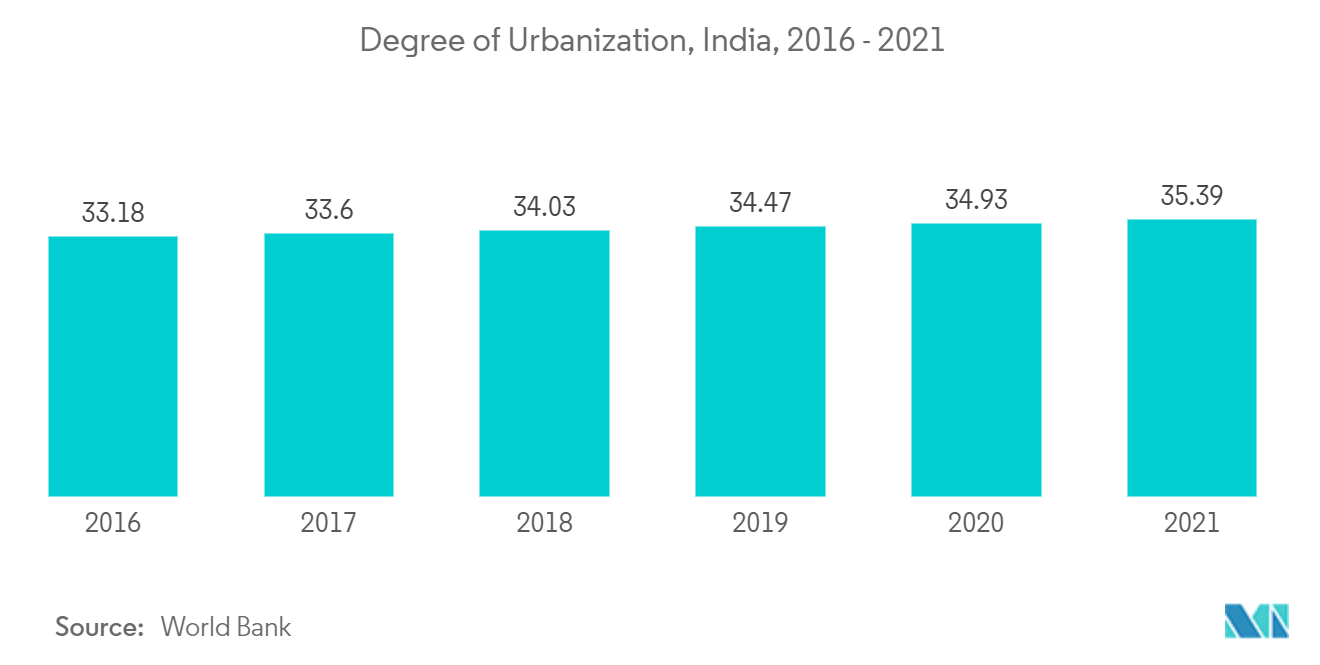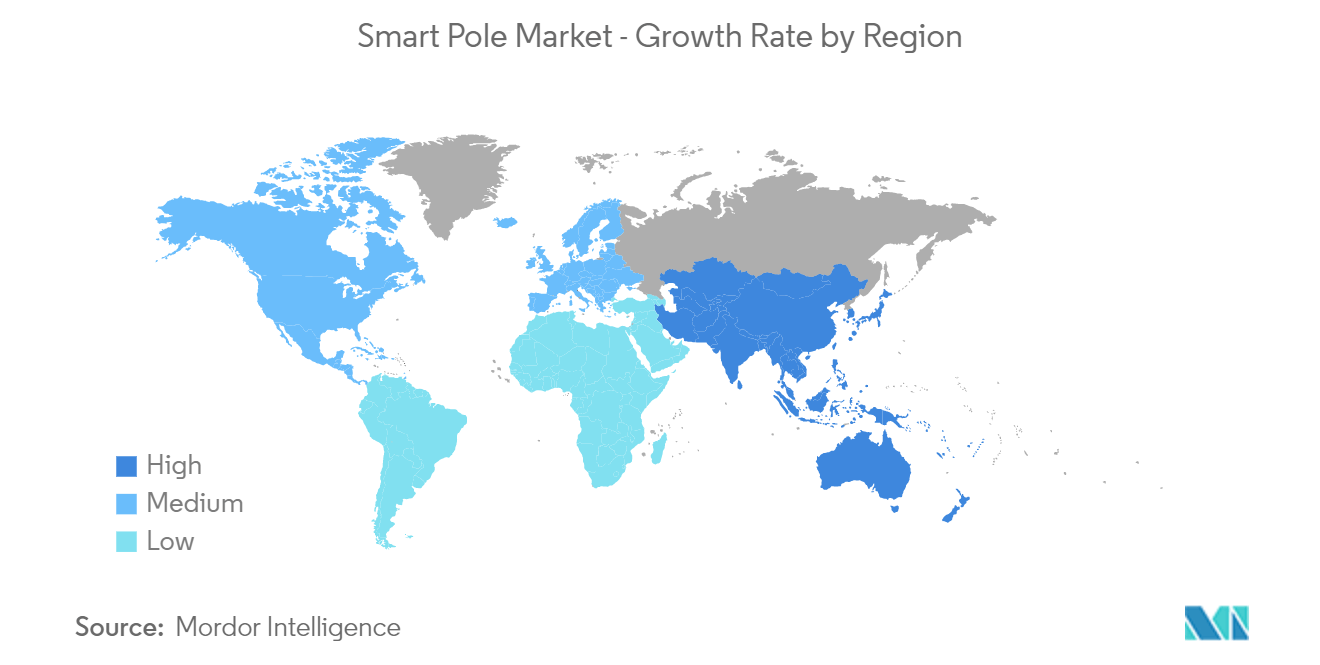Market Trends of Smart Pole Industry
Growing Smart City Initiatives by Various Governments
- The rising urbanization and the need to manage infrastructure are prompting countries worldwide to invest in smart city projects. Various governments across the world are implementing the smart pole solution to fuel their smart city development. For instance, in July 2021, the Chennai city police announced that they plan to improve traffic management by installing more smart poles integrated into a command center. The installation is part of a smart city project implemented by the Greater Chennai Corporation and other departments at the cost of INR 900 crores (~USD 108 million).
- Further, to augment the Smart City Mission, New Delhi Municipal Corporation (NDMC) installed 55 energy-saving smart poles in Connaught place in Delhi. The poles boast air sensors, energy-saving LED lighting, and WiFi connectivity. The lights of these poles can automatically be dimmed to save energy during non-peak traffic hours.
- On similar lines, in April 2022, the European Commission announced the 100 EU cities participating in the EU mission for 100 climate-neutral and smart cities by 2030. The 100 cities come from all 27 Member States, with 12 additional cities coming from countries associated with or potentially associated with Horizon Europe, the EU's research and innovation program.
- The lifetime of LED bulbs is four to forty times longer than conventional bulbs, which provides maintenance savings. Even simple maintenance changes usually require a bucket truck or hydraulic lift. Even if SmartPoles descend, it does not need a bucket truck. The reduced maintenance based on lifespan alone makes LED pole lights a good solution for every municipality.
- Further, LED penetration worldwide is still below 15%, with significant differences among countries, such as Japan and Canada showing higher LED penetration rates. Even within the same countries, LED penetration is quite different, as some big cities have already reached 100% (such as Milan and New York). This states the rate of development of infrastructure and further signifies the rate of growth of the smart poles market.
- In December 2021, Energy Efficiency Services Limited, a joint venture under the Ministry of Power, announced its plans to install 1.6 crores of smart LED street lights across the country by 2024. EESL has so far installed 1.2 crore LED streetlights in India, resulting in around 7.8 BU of annual electricity savings and an annual reduction of 5.3 million tCO2. Such initiatives from the government would likely fuel the demand for market studied.

Asia-Pacific Witnesses a Significant Market Growth
- Asia-Pacific is expected to be one of the significant markets for smart poles due to the increasing government initiatives in countries, such as China, India, Japan, and Australia, toward smart city technology.
- According to the "Smart Cities: Shifting Asia" report by UBS, the APAC will account for 40% of the global addressable market growth for smart city projects, or USD 800 billion, by 2025. Asian governments are investing in smart city initiatives and partnering with the private sector. For instance, China invested CNY 500 billion in China's National Smart City Program, and there were 500 smart cities in various stages of development, leveraging Big Data, cloud computing, IoT, and other smart systems. Thus, a significant development in smart city projects is augmenting the region's smart pole market growth.
- In China, to efficiently utilize renewable energy and solve the roadside fast charging of the electric vehicle (EV) problem, a smart hybrid pole system is proposed by Tongji University, Shanghai researchers, which is integrated with renewable energy Street Lighting Pole (SLP) and EV charging. A cloud management platform can control the hybrid pole energy storage system, so it is convenient to decide whether to charge or discharge according to different power prices.
- The smart hybrid pole solution is conducive to EV charging and the efficient application of renewable. According to data from a white paper, India needs to set up 46,000 electric vehicle charging stations by 2030 to reach the global benchmark. The EV charger ratio is six for China and the Netherlands, 19 for the U.S., and 135 for India. That means there is one charger per 135 EVs in India compared to 6 in China.
- Moreover, various smart city projects in India are expected to provide opportunities for market growth. For instance, in 2021, iRAMTechnologies received four large projects for smart street lighting, smart pole, and smart parking city assets in smart cities of Dahod, Pimpri Chinchwad, Kohima, and Rajkot.

